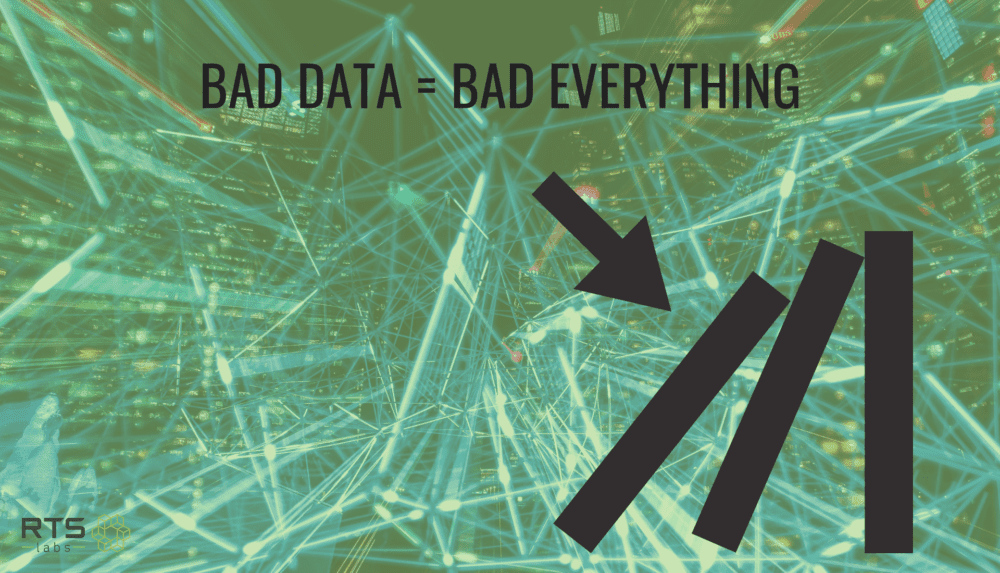How many articles have you read lately about the wonders of data and how it can transform your business? (Maybe some of them have even been ours.) The stories are true. Harnessing your data and using it intelligently can be a game changer for your business. But not if you have crappy data. Or the wrong data. Just because you’ve been collecting massive amounts of data, doesn’t mean it’s going to benefit you. Because the fact of the matter is: Not all data is created equal – some data just plain sucks.
Unfortunately, a lot of businesses don’t know that. They take on huge projects to implement business intelligence or artificial intelligence expecting great insights and end up disappointed.
So what could be wrong with your data? Well …
You’re not collecting enough of the right data
According to a survey by PricewaterhouseCooper, 94% of CEOs surveyed consider data on customer and client preferences or needs as critical or important, but only 15% actually have comprehensive data in this area.
Simply collecting as much data as possible is not a sound approach. You need to determine what data you’ve been collecting, how it is being used, and what data is missing in order for you to reach your business objectives.
Your data could be bad or unreliable
How is your data being collected and managed? This is an important question to answer. First, a lack of accuracy could lead to bad insights. Second, if you’re using data for AI or BI consumption, unreliable and missing data can wreak havoc on the algorithms and machine learning processes. Simply put, if you want good results, your data sets must be accurate.
How does data become bad or unreliable? A few ways – most of which are attributable to human error. You could be missing data altogether (such as when you have empty fields that should contain data), information could have been entered incorrectly, data could have been entered into the wrong field, your data could be non-conforming (data entered in the wrong format), duplicate data, and entry errors, such as typos.
Your data could lack detail
How is your data being prepared for consumption? If it was collected haphazardly and lacks detail, labeling, and metadata, it’s not usable with AI or other advanced automation. And automation is one of the two most critical things you can do with your data – that and getting better business insights to make more informed decisions.
It actually takes a lot of time and effort for a data scientist to collect and prepare data properly to be used by technology, such as business intelligence and artificial intelligence. The data needs to be sourced (or “wrangled”), integrated, transformed and cleaned (formatted).
You’re pulling data from multiple sources and each source has its own structure. But in order for technology to be able to pull it all together and make sense of it, all the raw data needs to be formatted and standardized in order for it to fit together. If you’re just pulling in raw data and it isn’t formatted to work together, you could end up missing essential metadata that could give you the whole story.
Your data could be non-compliant or unsecure
As we enter into a world of machine learning and personalized marketing, compliance standards will continue to mount. Are your data and the ways you collect it compliant with cyber and privacy policies? Do you have a data governance program in place? Are you ensuring that its collection and use are unbiased? It’s important that you develop a framework to ensure your entire data lifecycle is secured against cybercrime and privacy violations.
There’s no question that harnessing data for use in technology like AI or BI can transform your business in a number of ways. The question is … is your data ready and is it reliable?
The potential is there
According to a study conducted by the University of Texas at Austin, increasing data usability by 10% could boost annual revenue by more than $2 billion for the average Fortune 1000 company. In this study, that meant an average of 36,000 employees who generated around $388,000 in sales each. Even if you’re a little smaller than that, if you scale down the ratio, how much growth potential would you still get from a 10% increase in your data usability?
Want to learn more about getting your data ready for a technology solution? Check out this article about the critical steps you need to take to prepare your data before plugging it into any BI solution.
Are you starting to think now about wanting to put together a data strategy and road map? Maybe you want some help preparing your data for a technology solution? We can help! Find out more about the data analytics services you can choose from – and then schedule a free data discovery session to uncover your true data potential.






